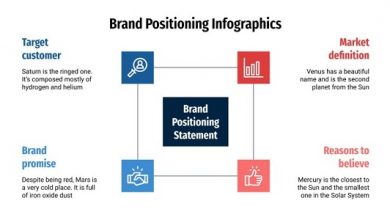What are agile methodologies 3 methodologies in remote work
What are agile methodologies?
Agile methodologies consist of short development cycles, turning large projects into small production sprints and better controlling the end result.
Agile methodologies, very common in technology-related areas, have gained space in several other sectors in recent years. Today, for example, you already hear about agile marketing.
It’s not that traditional project and team management has been forgotten. But the adaptation, taking into account the concepts of agility, promises to bring much more productivity, engagement, transparency and speed in the development of projects.
When we talk about remote work, the approach becomes even more interesting: how to ensure that all teams and collaborators are aligned? That everyone knows exactly what to do? Which deliverables generate the most value? What needs to be prioritized? What meetings really need to happen?
These and other answers are given by agile methodologies. Shall we get to know them a little better? Keep reading!
Agile methods, or Agile , emerged in the IT area in the context of product and software development.
In these cases, where the final deliverables are very clear and the deadline is well established, in order to reach the desired end, it is necessary that the activities to be performed are well aligned to ensure the fluidity of the work, as well as the success of the project.
Traditional project management models structure long development cycles, and agile methodologies propose short development cycles . These smaller cycles have well-defined work focus and prioritizations, clear deliverables, alignment processes, and constant feedback .
The main difference between traditional project management models and agile models is that, in the former, the entire project path is designed and planned before execution and implementation. It was considered a “delivery” when all project specifications ー long ー had been finalized.
Focusing on Agile , there is a much more focused approach on execution and adaptability throughout the process , opting for more autonomous and multidisciplinary teams and collaborators.
Pedro Colen, Marketing Manager at Meu Acerto , reinforced in a webinar the importance of feedback for the progress of an agile project.
For him, “feedback is the main word when we think about agile. Feedback from people, users…. Feedback does not necessarily need to be spoken, but it can also be seen in the numbers that we can produce and data that we can collect for analysis”.
It is important to emphasize that there are several methodologies that apply agile concepts. Therefore, to say “agile methodologies” means to apply a series of principles that characterize the agile way of managing projects .
However, there are several different techniques that apply these concepts, and the best known are Scrum, Lean and Kanban .
Agile Manifesto
To formalize and, above all, facilitate the understanding of what an agile methodology is, in 2001, a group of specialists got together to create the Agile Manifesto , a document that formalizes the main bases and guides the application of an agile method.
Are they:
- Individuals and interactions more than processes and tools (communication).
- Working software rather than comprehensive documentation (practicality).
- Customer collaboration more than contract negotiation (collaboration).
- Responding to change rather than following a plan (adaptability).
The most used methodologies
As we said before, there are several methods that apply the principles highlighted in the Agile Manifesto and, as time passes, new methodologies gain space. Discover the three main ones:
1-Scrum methodology
This is one of the most used methods to apply agile concepts. The idea behind Scrum is simple to understand, as long as the roles and functions are clearly defined among those involved.
To apply Scrum, it is important that there is a Product Owner (PO), the “owner of the product”. This professional must represent the interests of the end customer, ensuring that the activities to be performed are focused on user satisfaction after delivery.
The PO will list the main tasks and activities to be performed and, above all, prioritized for each Sprint . A Sprint is a short, defined time frame (one or two weeks, for example) that has a defined focus and clear deliverables for each team member.
As feedback and alignments are fundamental in any agile methodology, in Scrum, at the end of each Sprint, a meeting is held in which the team discusses what was done, the challenges and difficulties faced , and discusses what will need to be redone or prioritized in the next Sprint.
An important concept in Scrum is the “ Backlog ”. The Backlog is a “deposit” or a “reserve” of activities to be done to ensure the delivery of the project. Everything that needs to be done, at first, is in the backlog . As the weeks go by, the PO defines which tasks leave there to enter the Sprint .
2-Kanban methodology
This methodology became very well known, mainly for the diffusion of Trello , a project management application that uses Kanban as inspiration.
Very focused on the visual management of activities and also on the simplification of processes, Kanban requires the creation of a board (physical or online), divided into three columns:
- To do: must present all the tasks to be done in a certain time interval.
- Doing (in progress): in this column will be all the activities that, in the present tense, are being executed.
- Done : here will be the tasks already validated and delivered by each of the teams.
A Kanban challenge is to ensure the engagement and participation of teams, since it is the autonomy of each person responsible for the task, moving it through the columns to ensure that everyone can see the progress of activities, who to turn to, etc.
3-Lean Methodology
The concept of Lean became known with the publication of the book “Lean Startup” which, in translation, is known as “ Lean Startup ”. The focus of this methodology is to identify and extinguish points that generate financial and time waste during the course of a project.
The concept of MVP (Minimum Viable Product) is widely applied when using Lean to manage projects: here, the objective is always to seek the simplest, most functional and lowest cost way for a given demand.
Therefore, for companies that seek to optimize processes for launching products and services, adopting the Lean methodology may be ideal, given that the focus is on what really generates value for the customer, without the expense of superfluous efforts and generation of waste.
Helpful tools to use while working remotely
The purpose of this content is to provide you with an overview of the principles, advantages and models of agile project management. Maybe you are wondering: how to apply? Is it possible to start implementing some agile methodology in the context of remote work/ home office ?
The answer is yes!
In fact, the agile approach is especially useful in these scenarios , where communication plays a crucial role in the progress of activities, it is one of the main challenges, since face-to-face alignments are not made.
To ensure that, in practice, it will be possible to implement any of the aforementioned agile methodologies, you can use very simple usability tools .
Do not forget that, in the case of remote work, it is necessary to look for a suitable tool for holding meetings. They are essential to ensure clear communication, feedback routines, constant learning and even help motivate employees. Some suggestions are: Zoom Meetings, Google Hangouts, Skype and Microsoft Teams.
Remember: agile methodologies need to be simple and intuitive. The idea is not to bring one more occupation to your team. On the contrary! They should serve to facilitate routine and alignment among all those involved.
Regardless of the methodology or set of tools chosen, it is possible to identify several benefits when agile methodologies are applied, even in more traditional company and department contexts.




